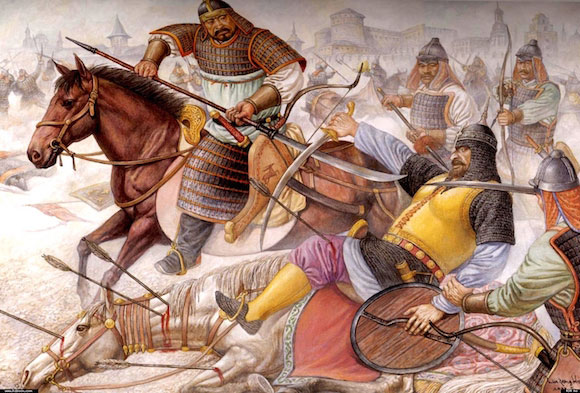
“The Next Christendom,” by Christian historian Philip Jenkins, provides an interesting take on Christianity in the Middle East. In the Middle Ages, he writes, Christianity was much stronger in the Middle East than in Europe. In fact, Christianity came to dominate Europe much later than we normally think. So in 1200, the world’s “average” Christian was not a French artisan, he says, but a Syrian peasant; an Asian, not a European.
Christianity in the Middle East largely survived the Muslim conquest, and the two religions co-existed pretty well for centuries. Yes, the Muslims were definitely in charge, and not always nice about it. Yet, large Christian communities flourished throughout what are today predominantly Muslim countries.
So what happened to all of those Christians?
Jenkins points to a force we don’t normally think about: the Mongols, from central Asia. Several times over a 200-year period, they invaded the Middle East, slaughtering Muslims and Christians alike. The Mongols threatened to wipe out Islam, and were allied in ways with Crusaders coming from the west.
Interestingly, some prominent Mongols identified as Christians as a result of the ancient Nestorian movement in the East (the Mongols practiced freedom of religion). Some Middle Eastern Christians came to see the Mongols as potentially liberating them from Muslim domination, and so allied themselves with the Mongols. The Mongol king who captured Baghdad in 1258 had a Christian queen who influenced the Mongols to destroy Muslim mosques (the Mongols took a high view of women, as compared to the Muslims).
In 1260, a Mongol Christian led the Mongol invasion of Palestine. However, Muslim Turks stopped them cold at the battle of Ayn Jalut, near Nazareth. This ended the Mongol advance, and Islam once against took the lead…and began exacting revenge on Christians for siding with the Mongols. Since then, it’s been downhill for Christians in Muslims lands. In addition, Jenkins says, while Europeans blamed the plague on Jews, Muslims blamed it on Christians and intensified their persecution.
Jenkins estimates that between the Nestorians and Catholics, there were several hundred thousand Christians in China, and they were associated with the Mongols. When the Ming dynasty took power from the Mongols, they began wiping out Christians. By 1500, says Jenkins, “There is no evidence of any organized Christian activity in China.”
And thus did the mainstream of Christianity shift to Europe.
It’s a bit of history I find quite fascinating.





